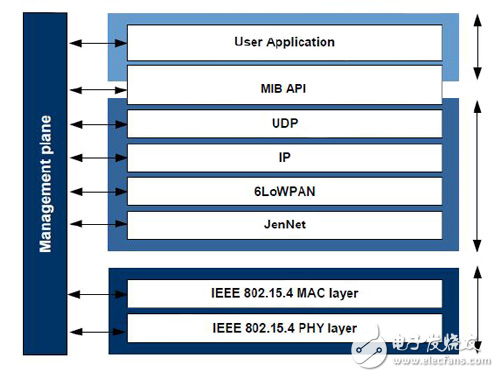
资料下载

无线家庭自动化IPv6和特
无线家庭自动化IPv6和特
家庭自动化是许多无线通信设备制造商试图征服的领域,迄今为止取得了有限的成功。最新一代ISM(工业,科学和医疗)频带带收发器拥有巨大的希望改变所有这一切,提供关键因素,如数据链路,协议,成本,规模和功率预算可以成功地解决。
IPv6是面向家庭自动化应用的协议之一,它具有“讲互联网”的优点,使设备更容易无缝连接。本文将在实例模块和芯片使IPv6连接,也会研究IPv6叫JenNet-IP的超集,“网下”基于一个低功耗802.15.4框架,目标家庭自动化和能源管理类应用协议。
詹妮特拟将互联网的一切,让家电、娱乐系统和公用事业是在线访问,为监测和控制功能。即使是詹妮特倡导的公司有足够的马力和记忆任何微控制器可以实现IPv6和JenNet协议。由于无线电链路可以是一个标准的2.4 GHz ISM链路,一些RF和单芯片无线电是候选人使用。

The need for IPv6
IPv4 did a good job of establishing connectivity and getting Ethernet and the Internet up and running. However, as had long been predicted, the 4.29 billion possible 32-bit-based addresses have been issued and used. The transition to IPv6 is no longer optional.
With its 128-bit addressing, the need to increase the potential addressing fields will most likely never be made again in our lifetimes, since this present day standard results in over 3.4 x 1038 possible addresses.
With technical problems being solved, along with the backbone infrastructure and routers now complying with NAT translation from IPv6 to IPv4 and back again, the only thing holding us back from IPv6 devices are the devices themselves. These are rolling out the door as we speak.
声明:本文内容及配图由入驻作者撰写或者入驻合作网站授权转载。文章观点仅代表作者本人,不代表电子发烧友网立场。文章及其配图仅供工程师学习之用,如有内容侵权或者其他违规问题,请联系本站处理。 举报投诉
- 相关下载
- 相关文章






